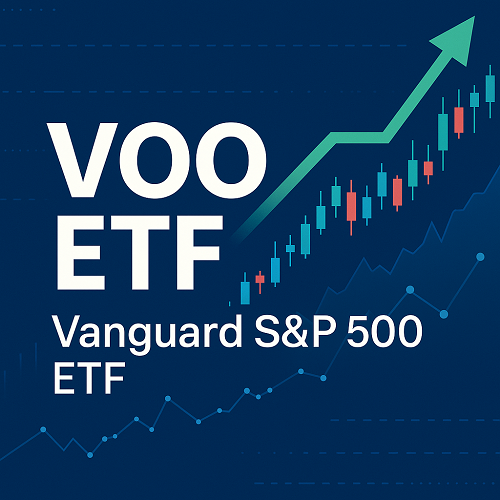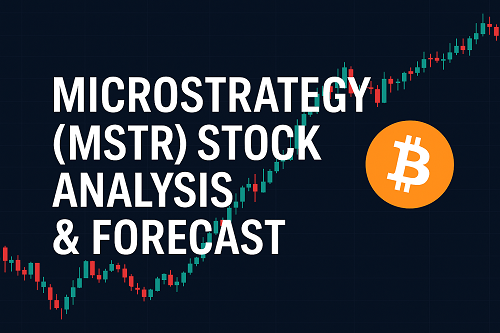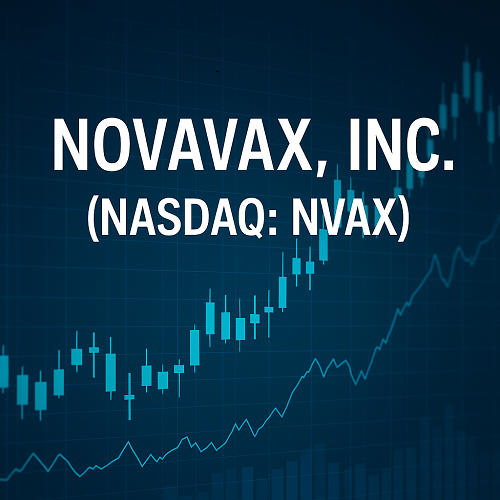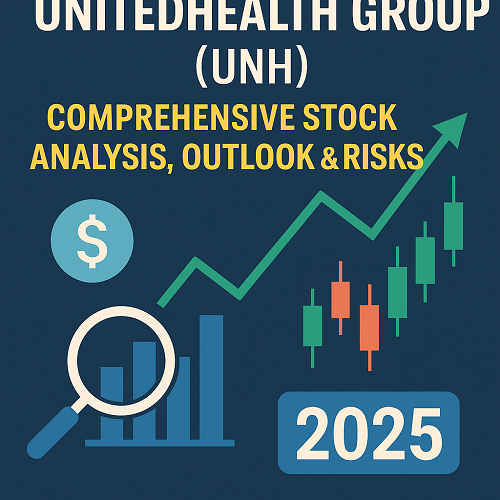What Is VOO?
VOO, or the Vanguard S&P 500 ETF, is a passively managed fund designed to track the S&P 500 Index — that is, the 500 largest publicly traded U.S. companies by market capitalization. Vanguard+2AAII+2
Vanguard launched VOO on September 7, 2010. AAII+1 Its mission: to provide low-cost, broadly diversified U.S. large-cap exposure, in line with Vanguard’s index investing philosophy. Vanguard+2ETF Research Center+2
As of recent estimates, VOO commands a massive asset base (hundreds of billions of USD), reflecting its popularity among long-term investors. Vanguard+4Finance Charts+4ETF Central+4
In February 2025, VOO overtook SPY (State Street’s S&P 500 ETF) as the world’s largest ETF by assets. Reuters+1
This guide explores everything you must know before investing.
2. Fund Basics: Structure, Inception, Expense Ratio
| Metric | Value / Description |
|---|---|
| Inception Date | September 7, 2010 AAII+1 |
| Fund Type | ETF (open-ended, passively managed) ETF Research Center+1 |
| Benchmark | S&P 500 Total Return Index (U.S. large-cap) ETF Central+3AAII+3ETF Research Center+3 |
| Expense Ratio | 0.03% (3 basis points) Vanguard+4Morningstar+4ETF Research Center+4 |
| Portfolio Turnover | ~2% (very low) Morningstar+1 |
| Dividend Yield (TTM / trailing) | ~1.17% Finance Charts+3Morningstar+3AAII+3 |
| Number of Holdings | ~500 (mirrors S&P 500 membership) AAII+2ETF Research Center+2 |
Low Costs & Passive Design
One of VOO’s biggest competitive advantages is its ultra-low expense ratio (0.03%). In the ETF world, that is among the lowest for U.S. equity index funds. Morningstar+2ETF Research Center+2 Because it’s passively managed and tracks the benchmark via full replication or representative sampling, tracking error is minimal (covered later). ETF Research Center+2Vanguard+2
With a low turnover (≈2 %), transaction costs and tax drag are minimized. Morningstar+2AAII+2
3. Performance History & Returns
Historical Returns (Annualized / Cumulative)
Over the long term, VOO’s returns mirror those of the S&P 500 (minus a small drag from fees). According to available data:
- Over 5 to 10 years, the total returns often exceed 100% or more when compounding. Finance Charts+2ETF Central+2
- Its total assets under management, price charts, and historical performance are publicly tracked on platforms like FinanceCharts. Finance Charts
- According to ETF Central, VOO maintains strong performance relative to peers. ETF Central
Recent Trends & Volatility
- As with any equity fund, VOO is subject to market volatility — drawdowns during recessions or bear markets can be severe.
- But due to its low cost and efficient structure, recovery periods often overlap or closely match the benchmark.
- In 2024 and into 2025, inflows into VOO were tremendous, reflecting increased investor confidence. Financial Times+2Financial Times+2
Total Returns vs Price Returns
Be sure to distinguish total return (price appreciation + dividends reinvested) from simple price return. Over long horizons, reinvesting dividends can materially boost compound growth.
4. Holdings & Sector Exposure
Because VOO tracks the S&P 500, its composition closely mirrors the index’s sector and market cap weightings.
Top 10 Holdings & Concentration
As of recent snapshots:
- The top 10 holdings often command 30–40% of the total weight. ETF Central+3AAII+3ETF Research Center+3
- Typical names:
• Apple Inc.
• Microsoft Corp.
• Amazon
• Alphabet (Class A / C)
• Meta Platforms
• Nvidia
• Other mega-cap tech names
Morningstar+4ETF Research Center+4ETF Central+4
This concentration is a function of the market-cap weighting method: larger firms get more weight.
Sector Weights
Typical sector breakdown (approximate percentages):
| Sector | Approx % |
|---|---|
| Information Technology | ~25–30% |
| Healthcare | ~12–15% |
| Consumer Discretionary | ~10–12% |
| Financials | ~10% |
| Communication Services | ~8–10% |
| Industrials | ~8% |
| Consumer Staples | ~5–7% |
| Energy | ~3–5% |
| Utilities / Real Estate / Materials | smaller weights |
These vary over time depending on market cycles. Vanguard+3Finance Charts+3ETF Central+3
Because VOO mirrors a broad index, it has built-in diversification across sectors and major U.S. equities.
5. Fee Structure & Tracking Error
Expense Ratio & Costs
At 0.03%, VOO’s expense ratio is extremely competitive. That translates to just $0.30 per $1,000 invested per year. Over decades, those savings compound. AAII+4Morningstar+4ETF Research Center+4
Other hidden costs include bid-ask spreads, trading costs inside the ETF, and tax slippage. But given VOO’s size and liquidity, these are generally minimal.
Tracking Error
Tracking error measures how closely an ETF follows its benchmark. For VOO:
- It is typically very low, because of the efficient replication approach.
- The low turnover helps reduce deviations.
- Over time, tracking error is dwarfed by the underlying market movements; the biggest drag is the expense ratio itself.
Investors should check published tracking error metrics periodically (often available from Vanguard or ETF research services).
6. Comparing VOO vs SPY vs IVV
If you’re choosing among S&P 500 ETFs, VOO is one of several top options. Here’s how it stacks up against SPY and IVV.
| Feature | VOO | SPY | IVV |
|---|---|---|---|
| Expense Ratio | 0.03% | ~0.0945% Wikipedia+2ETF Research Center+2 | 0.03% |
| Fund Structure | Open-ended ETF | Unit investment trust (with some structural constraints) Wikipedia+1 | Open-ended ETF |
| Dividend Reinvestment Flexibility | Fully flexible | Some constraints (due to trust structure) | Flexible |
| Liquidity / Average Volume | Very high | Highest (SPY tends to be most liquid) | Very high |
| Tracking Error | Very low | Low | Very low |
| Suitability | Long-term buy-and-hold | Active trading, options, ultra high liquidity | Long-term core holding |
Advantages of VOO over SPY:
- Lower fees (VOO is significantly cheaper per dollar invested).
- More flexibility in structure.
- Highly competitive tracking.
Advantages of SPY:
- Extreme liquidity, narrower spreads.
- Options market depth and derivatives ecosystem more developed.
Thus, VOO is ideal for long-term investors seeking cost-efficient exposure, while SPY may better suit ultra-active trading. IVV often sits in between.
7. Strengths & Weaknesses
Strengths
- Ultra-low cost: 0.03% fee is among the lowest in U.S. equity ETFs.
- Broad diversification: Exposure to top 500 U.S. large-cap stocks across sectors.
- Scale & liquidity: Vast AUM ensures tight spreads and ease of trading.
- Tax efficient: Low turnover and structure help minimize capital gains distributions.
- Benchmarked to S&P 500: Easy benchmark reference, widely respected index.
- Proven track record: Long-term performance aligns with U.S. stock market growth.
Weaknesses / Risks
- Concentration risk: Heavy weighting toward mega-cap tech means sector swings heavily influence returns.
- No downside protection: In market crashes, VOO will fall nearly in step with the S&P.
- Limited small / mid-cap / international exposure: If those segments outperform, VOO won’t capture that.
- Dependence on U.S. economy: Macro risks in U.S. markets directly affect performance.
- Tracking deviations: In rare stressed market conditions, ETF operational frictions may cause slight mismatches.
Understanding both upside and downside is critical. Use VOO as a core, not a full equity bet.
8. How to Use VOO in a Portfolio
VOO fits well into many portfolio strategies:
Core Equity Holding
Many investors adopt a “core-satellite” approach: VOO as the core large-cap U.S. equity slice, plus satellite allocations (small-cap, international, thematic, bonds). This gives stability through the core while allowing diversification and alpha opportunities in satellites.
Dollar-Cost Averaging & Regular Contributions
Given its stability and long-term orientation, using VOO in a recurring investment plan (e.g. monthly or quarterly contributions) helps smooth entry pricing.
Rebalancing Anchor
Because VOO tracks a broad index, it can act as an anchor in portfolio rebalancing. If U.S equities run ahead or lag, rebalancing into or out of VOO helps maintain target allocations.
Use in Retirement / Tax-Advantaged Accounts
In tax-advantaged accounts (IRA, 401(k), TFSA, RRSP equivalents), holding VOO minimizes tax drag and maximizes compounding power.
9. Tax Treatment & Distributions
Dividend Distributions
- VOO distributes dividends quarterly.
- The yield is modest (around ~1.17% trailing). Morningstar+2ETF Research Center+2
Capital Gains / Tax Efficiency
- Thanks to low turnover and in-kind creation/redemption mechanics, VOO is very tax-efficient, often avoiding large capital gains distributions.
- However, in non-U.S. accounts, withholding taxes on U.S. dividends may apply. Always check your local tax rules.
In Canadian or Other Jurisdictions
- For Canadian investors (or non-U.S. investors), dividends from VOO may be subject to U.S. withholding taxes (e.g., 15% for some treaty jurisdictions).
- Also, you may have to report foreign income & foreign asset holdings per local regulations.
Consult a tax advisor for jurisdiction-specific implications.
10. Risk Factors & Drawdowns
VOO is not risk-free. Key risks:
- Market risk: Broad equity market downturns will affect VOO heavily.
- Concentration in tech / growth: In a rotation away from growth, VOO may suffer more.
- Interest rate sensitivity: Rising rates may put pressure on valuations of growth names that dominate VOO.
- Liquidity crunch: In extreme stress, ETFs (even large ones) may face wider spreads or redemption pressures.
- Tracking deviations under stress: During extreme volatility, small mismatches or frictions may cause the ETF to deviate somewhat from the index.
Past Drawdown Examples
During recessions or bear markets (2008, 2020), broad market ETFs like VOO (or its benchmark) have experienced steeper declines (−30% to −50+%), requiring years to recover. A long-term horizon is essential.
11. Steps to Invest in VOO
- Open a brokerage account in a jurisdiction that offers access to U.S. equities/ETFs.
- Deposit funds, converting to USD if necessary (account for FX spreads).
- Search for ticker “VOO”, confirm the ETF (check the issuer is Vanguard).
- Decide order type: market, limit, or fractional (if allowed).
- Buy or schedule periodic purchases (e.g. via DRIP or recurring plan).
- Set up dividend reinvestment, if desired and allowed in your account.
- Monitor performance and rebalance as needed.
Make sure to account for trading fees, currency conversion costs, and potential withholding taxes.
12. Outlook & Considerations for 2025+
Why VOO Continues to Attract Flows
- In 2025, VOO overtook SPY as the world’s largest ETF, fueled by massive inflows and the trend toward low-cost indexing. Reuters+1
- Vanguard’s reputation, platform scale, and cost discipline attract long-term capital. Financial Times+2Financial Times+2
Potential Headwinds
- If small caps or international equities outperform, VOO may lag relative to those segments.
- Rising inflation or interest rates put pressure on high P/E names (which VOO contains heavily).
- Market rotations or style shifts may cause short-term underperformance.
- Currency fluctuations (for foreign investors) may alter returns in local currency terms.
Scenario Analysis
- Base case: U.S. equities continue modest growth, VOO returns ~6–8% real annually (net of costs).
- Bull case: Technology resurgence or strong earnings growth pushes returns above 10%.
- Bear case: Recession leads to −20%+ drawdowns over 1–2 years before recovery.
VOO is best viewed as a long-term core building block, not a speculative bet.
13. Conclusion
VOO (Vanguard S&P 500 ETF) is one of the premier ETF choices for investors seeking broad U.S. large-cap exposure in the most cost-efficient way. Its extremely low fees, tax-efficient structure, scalability, and alignment with the S&P 500 make it a compelling core holding in many portfolios.
However, as with all investments, it’s not perfect — concentration in mega-cap tech, no downside protection, and sensitivity to U.S. economic cycles are real challenges. The optimal use of VOO is in a diversified, multi-asset portfolio, where it functions as the core equity anchor.
If you deploy it wisely, invest over the long term, and understand the risks, VOO remains among the strongest building blocks for equity portfolios in 2025 and beyond.





 XAUT-USD
XAUT-USD  AMD
AMD  MARA
MARA  SHOP
SHOP  BULL
BULL  CL=F
CL=F